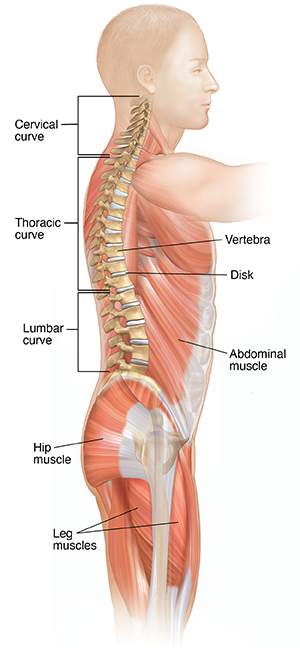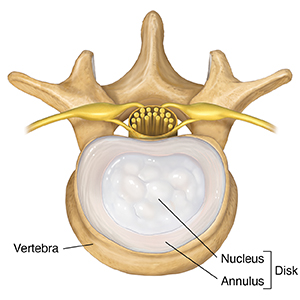A healthy spine supports the body while letting it move freely. It does this with the help of three natural curves. Strong, flexible muscles help, too. They support the spine by keeping its curves correctly aligned. The disks that cushion the bones of your spine also play a role in back fitness.
Three natural curves
The spine is made of bones (vertebrae) and pads of soft tissue (disks). These parts are arranged in three curves: cervical, thoracic, and lumbar. When correctly aligned, these curves keep your body balanced. They also support your body when you move. By distributing your weight throughout your spine, the curves make back injuries less likely.
Strong, flexible muscles
Strong, flexible back muscles help support the three curves of the spine. They do so by holding the vertebrae and disks in correct alignment. Strong, flexible abdominal, hip, and leg muscles also reduce strain on the back.
The lumbar curve
The lumbar curve is the hardest-working part of the spine. It carries more weight and moves the most. Aligning this curve helps prevent damage to vertebrae, disks, and other parts of the spine.
Cushioning disks
Disks are the soft pads of tissue between the vertebrae. The disks absorb shock caused by movement. Each disk has a spongy center (nucleus) and a tougher outer ring (annulus). Movement within the nucleus allows the vertebrae to rock back and forth on the disks. This provides the flexibility needed to bend and move.



